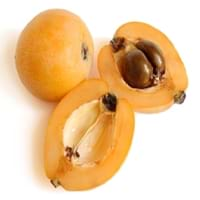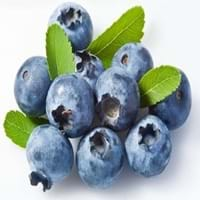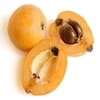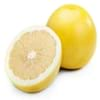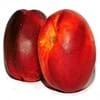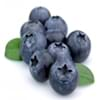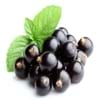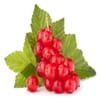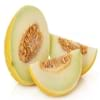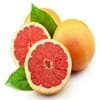Health Benefits
Cancer prevention, Heart care, Reduces nervous tension, Reduces blood circulation problems, Reduces stress, Regulation of heart rate, Strengthening of bones
Cancer prevention, Cures gastro-intestinal troubles, Improves night vision, Improves stomach health, Prevents diabetes, Prevents high blood pressure, Reduces blood circulation problems
General Benefits
Anti-inflammatory properties, Controls blood pressure, Digestive aid, Eye care, Helps in weight loss, Improves eye vision, Maintains healthy cholesterol level, Strengthens bones
Fights against infections, Helps in weight loss, Prevents blood clotting in vessels, Treatment of urinary tract infections
Skin Benefits
Anti-aging benefits, Reduces wrinkles, Treatment of dark spots, Treatment of skin diseases
Anti-aging benefits, Nourishes skin, Protects against skin damage
Hair Benefits
Protects hair
Prevents hair loss
Allergy Symptoms
Diarrhea, Itching of mouth, Nasal congestion, Sneezing, Swelling of face, Watery eyes
Not Available
Side Effects
Allergic reaction
Decrease in blood sugar levels, Diarrhoea, Dizziness, Headache, Internal bleeding, Stomach pain
Best Time to Eat
Along with meal, As a snack in the late afternoon, Don't consume at night and before bed, Morning time (before lunch)
As a snack in the late afternoon, Don't consume at night and before bed, Eat the fresh ones, avoid mixing with any other foods, don't eat after meal., Morning time (before lunch)
Vitamin B5 (Pantothenic Acid)
Not Available
Vitamin C (Ascorbic Acid)
Not Available
Vitamin E (Tocopherole)
Not Available
Vitamin K (Phyllochinone)
Not Available
Lutein+Zeaxanthin
Not Available
Phytosterol
Not Available
Calories in Fresh Fruit with Peel
Calories in Fresh Fruit without Peel
Not Available
Not Available
Calories in Frozen Form
Not Available
Not Available
Calories in Dried Form
Not Available
Not Available
Calories in Canned Form
Not Available
Calories in Juice
Not Available
Calories in Jam
Not Available
Calories in Pie
Not Available
Type
Tree fruit, Tropical
Berry
Varieties
Ahdar, Ahmar, Asfar, Blush, Champagne, Early Red, Eulalia, Fire Ball, Golden Red, Golden Yellow, Oliver, Thales, Thames Pride, Victor and Wolfe
Dwarf bilberry, Piper, bog blueberry, Northern bilberry, Mountain bilberry and Oval-leaved bilberry
Color
Orange, Yellow
Dark purple
Inside Color
Orange
Light Green
Soil Type
Clay, Loam, Sand, Well-drained
Moist, Well-aerated
Climatic Conditions
Warm to hot climate
Cold
Facts about
- Loquats are used in plum wine manufacturing.
- Dried leaves of loquat are used to make herbal tea.
- The seeds of loquat are slightly toxic & the symptoms of intoxication are nausea, vomiting & shortness of breath.
- Bilberries are used in manufacturing of alcoholic drinks.
- They are used to improve aromas of sorbets.
- The green extract of it's leaves is used in textile industry as natural dye.
Other Countries
Brazil, Chile, China, Egypt, Israel, Italy, Morocco, Pakistan, Portugal, Spain, Turkey
Denmark, Finland, Iceland, Sweden
Top Importer
China
United States of America
Botanical Name
Eriobotrya japonica
Vaccinium myrtillus
Synonym
Crataegus bibas or Mespilus japonica or Photinia japonica
blaeberry, whinberry, European blueberry, whortleberry
Subkingdom
Tracheobionta
Tracheobionta
Division
Magnoliophyta
Magnoliophyta
Class
Magnoliopsida
Magnoliopsida
Subclass
Rosidae
Dillenhidae
Family
Rosaceae
Ericaceae
Genus
Eriobotrya
Vaccinium
Species
E. japonica
Vaccinium myrtillus
Difference Between Loquat and Bilberry
We might think that Loquat and Bilberry are similar with respect to nutritional value and health benefits. But the nutrient content of both fruits is different. Loquat and Bilberry Facts such as their taste, shape, color, and size are also distinct. The difference between Loquat and Bilberry is explained here.
The amount of calories in 100 gm of fresh Loquat and Bilberry with peel is 47.00 kcal and 44.00 kcal and the amount of calories without peel is Not Available and Not Available respectively. Thus, Loquat and Bilberry belong to Low Calorie Fruits and Low Calorie Fruits category.These fruits might or might not differ with respect to their scientific classification. The order of Loquat and Bilberry is Rosales and Ericales respectively. Loquat belongs to Rosaceae family and Bilberry belongs to Ericaceae family. Loquat belongs to Eriobotrya genus of E. japonica species and Bilberry belongs to Vaccinium genus of Vaccinium myrtillus species. Beings plants, both fruits belong to Plantae Kingdom.
